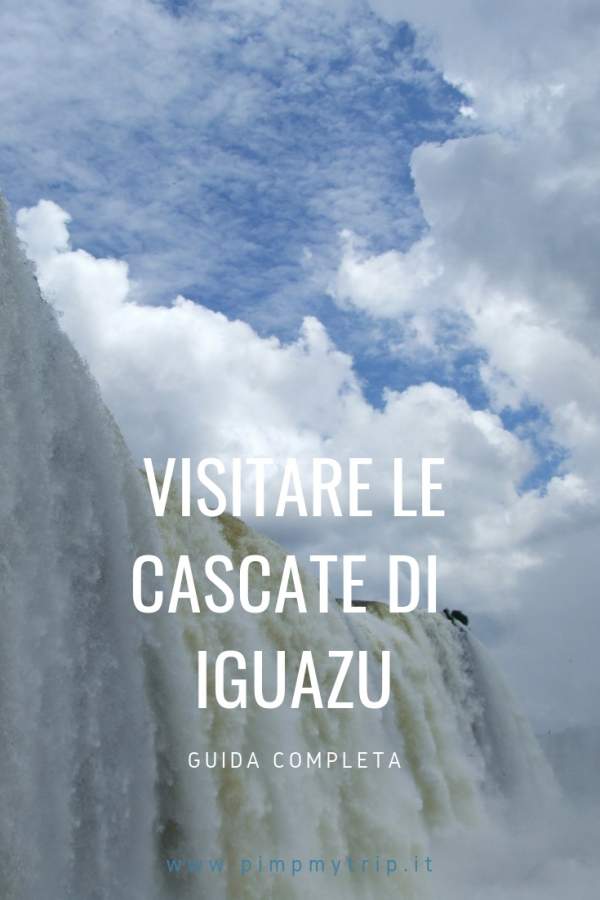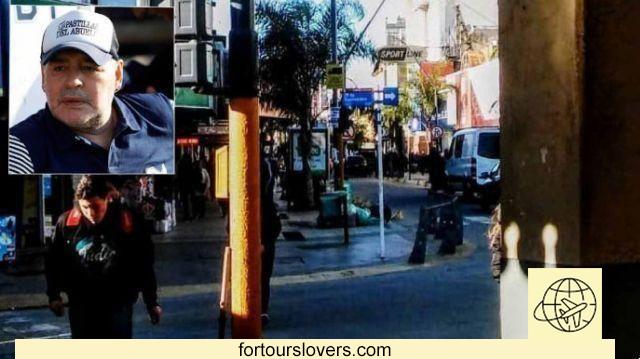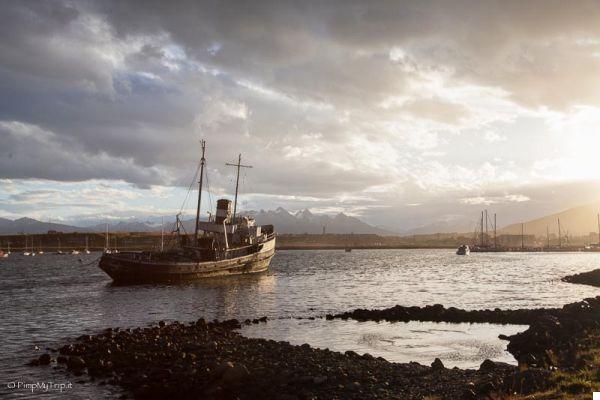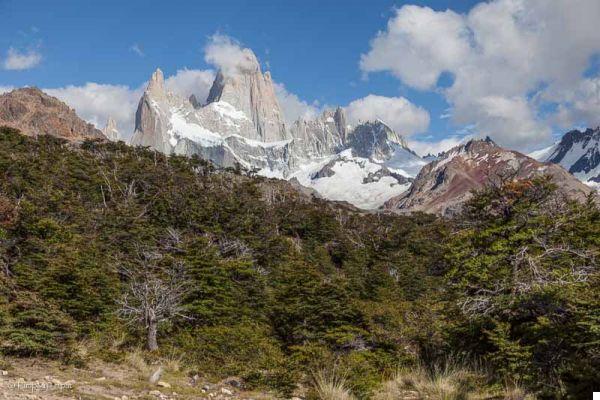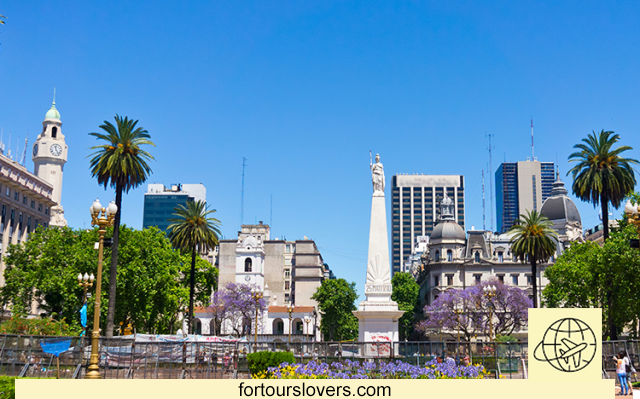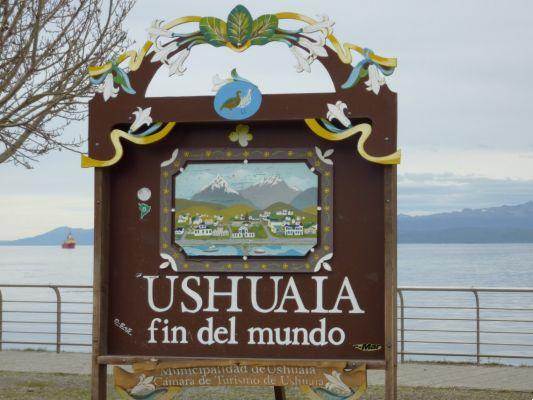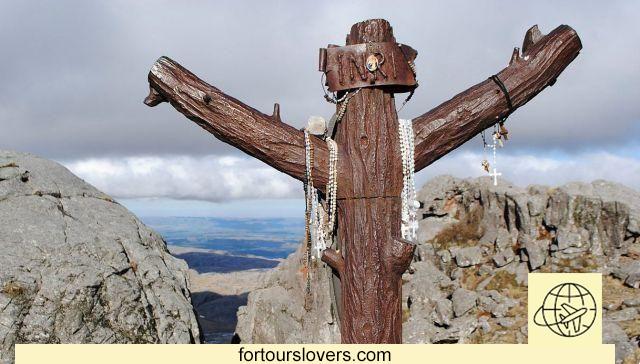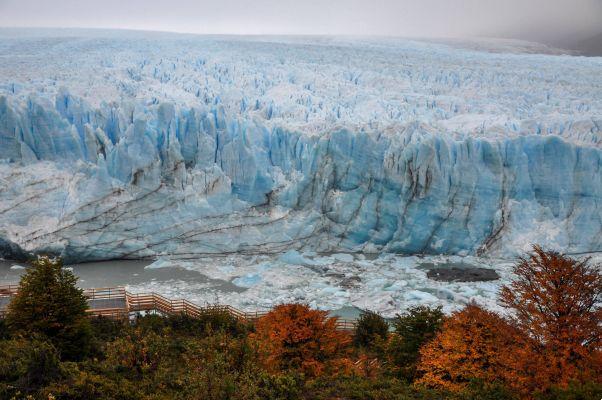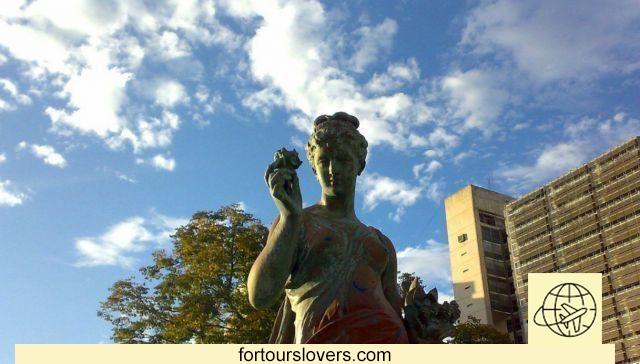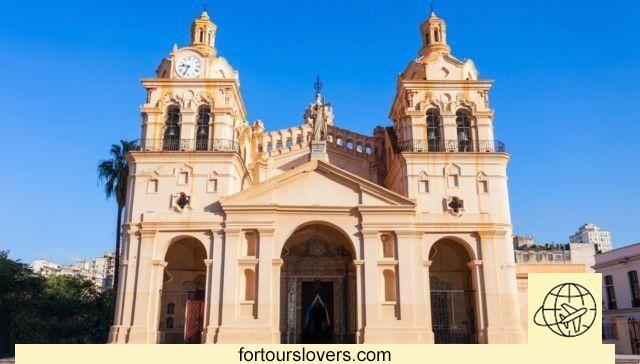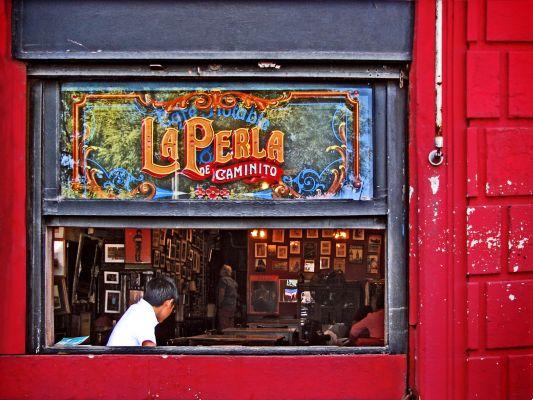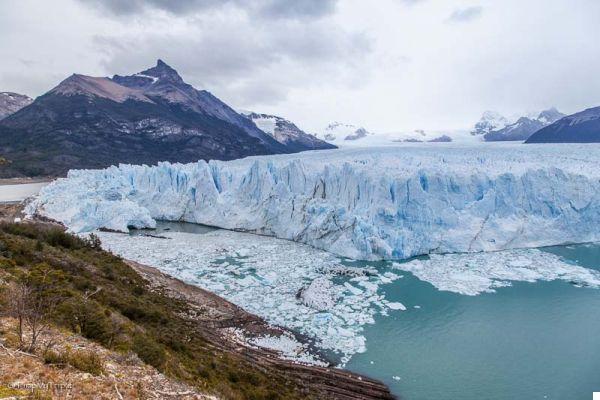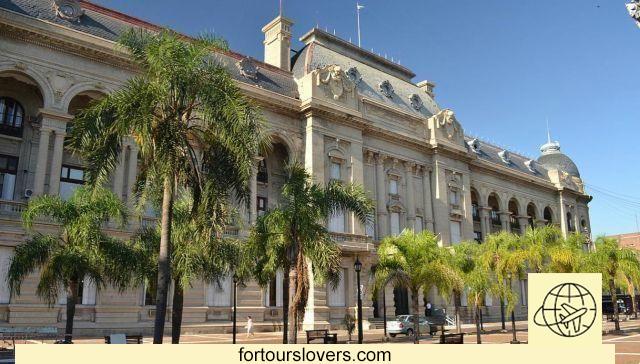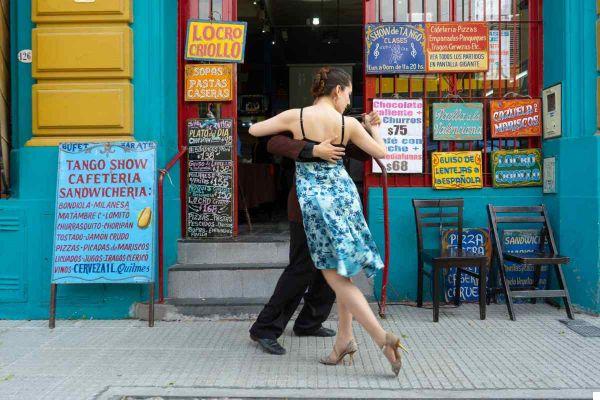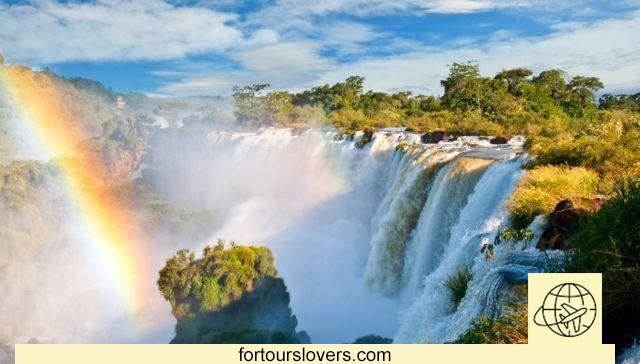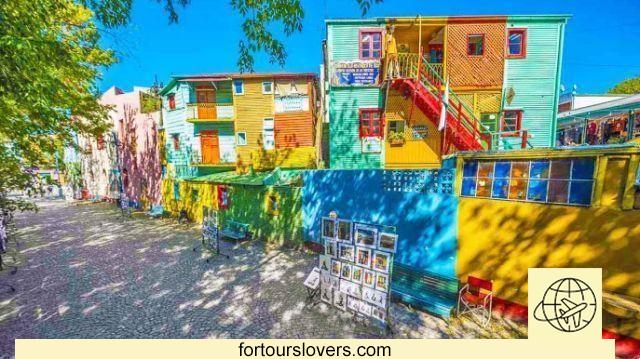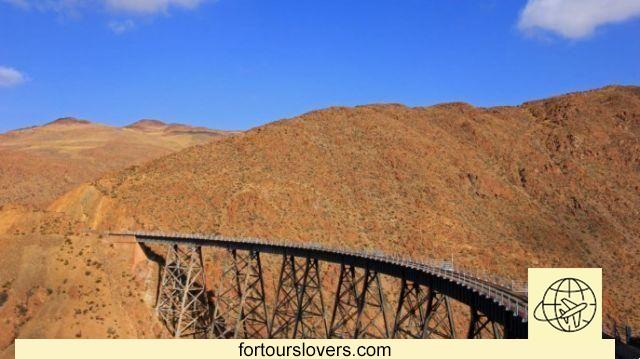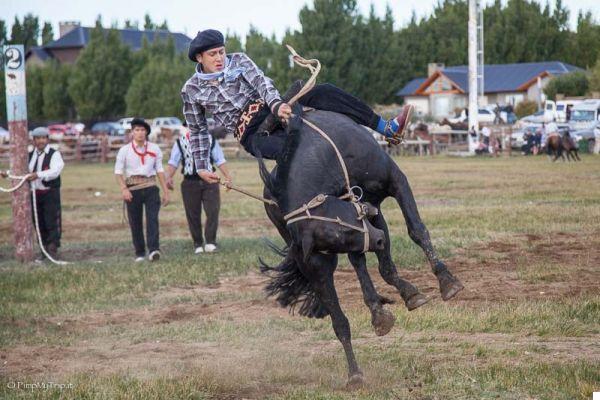When Eleanor Roosevelt first saw the Iguazu Falls (or Iguaçu) exclaimed "Poor Niagara!".
In fact, you may have heard of it, seen the photos or dozens and dozens of videos but, believe me, nothing is able to prepare you for the amazement you feel in front of one of the 7 natural wonders of the world.
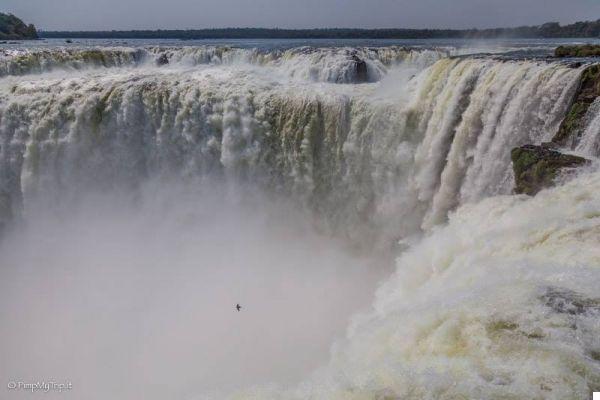
- The Iguazu Falls
- Legend of the Cataratas
- When to go
- How to get there and public transport
- Visit and Circuits
- What to bring
- Where to sleep
- Other Adventures nearby
The Iguazu Falls
I think it is impossible to describe the Iguazu Falls except with an uncontrolled sequence of superlative adjectives: they are without a doubt the most impressive in the world.
Just think of its numbers to understand what we are facing: when we talk about Iguazú falls we mean a system of 275 waterfalls with heights up to 80 meters, which extends for 2,7 km and with a range of 'water of 1,9 million cubic meters per second.
The Iguazú Falls are formed by the river of the same name, 19 km before it flows into the Rio Alto Paraná and form a natural border between the Province of Misiones in Argentina and the State of Paranà in Brazil.
The falls can be reached from three countries: Argentina, Brazil and Paraguay. The "bases" for the visit are: Puerto Iguazú in Argentina, Foz do Iguaçu in Brazil and Cuidad del Este in Paraguay.
The Iguazu Falls, both on the Argentine side and on the Brazilian side, are located within two large National parks: the Iguacu National Park on the Brazilian side and the Iguazu National Park on the Argentina side.
Legend of the Iguazu Falls
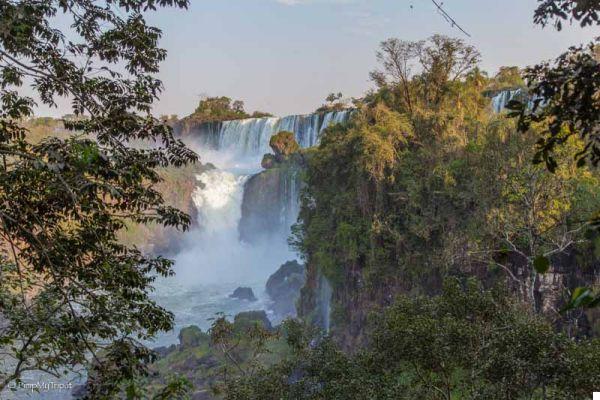
The first European to discover Iguazu Falls was one of the Spanish conquistadors named Cabeza de Vaca who arrived here in 1542 looking for a waterway to get to Paraguay.
Cabeza de Vaca encountered the falls and named them Santa Maria Falls.
The forest was inhabited by the indigenous Caiagangue and Tupi-Guaranì who already knew the falls well and called them precisely Iguazu which in their original language means "great water".
Today the falls retain their original name.
According to the indigenous Caigangue, the falls were formed for a tragic love story that ended badly. Legend has it that they were created by the god M'Boy (who was represented in the form of a snake) who fell in love with the beautiful Naipi, daughter of the village chief.
But she already had a love of hers, a brave warrior named Taroba and to escape the wrath of the God, they escaped in a canoe along the river. The God in revenge created the falls, in which the canoe fell and the two lovers disappeared forever. Also according to the legend, Naipi became a rock and her beloved Taroba a tree that looks to it for eternity.
When to go
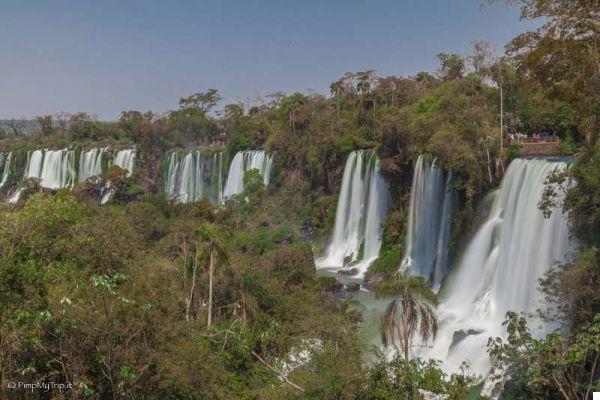
Although Iguazu Falls are located in an environment with a humid sub-tropical climate and can therefore be visited all year round, in my opinion, the factors to be evaluated in addition to the weather factor.
Meanwhile, the year in Iguazú can mostly be divided into two great seasons: the warm and rainy period, which runs from October to March and the dry period, from May to September, which is drier and cooler.
The season with the highest peak of visitors are the months of January February, when Argentines and Brazilians are on vacation, Easter e June. If you go in these months it is easy to find a lot of tourists (you will never find a few tourists in Iguazú, but these are the months with the most people ever) and the prices for eating and sleeping are the highest of the whole year.
Da December to March it is also in the height of summer the one with the highest temperatures and often a humidity that can reach 90%.
However, November to March is the best time for visit Patagonia.
Another thing to keep in mind is that this is also the monsoon season with heavy rains and, although the falls are more beautiful for the large amount of water, it sometimes happens that the walkways are flooded thus preventing you from making the entire route.
In this period there is also full of annoying and avid insects, so you absolutely have to bring a spray otherwise you are literally eaten alive.
The months from June to September they are the winter ones and are characterized by more bearable temperatures, even if the sky is often gray so the photographs could make less.
To visit the Iguazú Falls, you must therefore try to make the best compromise: fewer queues, more bearable temperatures and the likelihood of not getting rain and the amount of water in the falls.
I was at the beginning of September and although it was very hot and there were many tourists, the sky was almost blue and there was not a crazy crowd so I can recommend this period.
They have been very rare, but there have been cases where the falls were completely dry in winter.
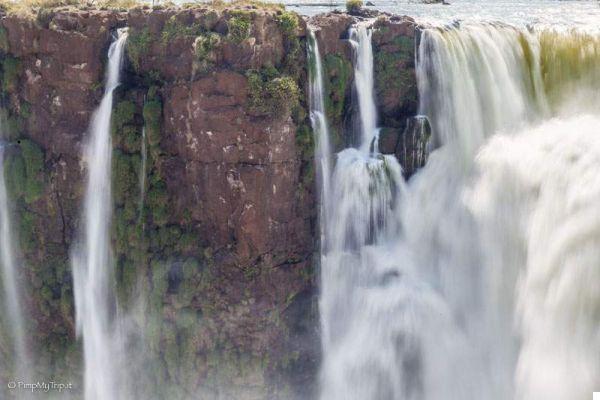
How to reach us
To get to Iguazu Falls from Europe you need to make a stop or in any case a stopover or in Buenos Aires and Rio de Janeiro.
The two airports for the falls are Foz do Iguaçu Airport (IGU) on the Brazilian side e Iguazu Falls (IGR) on the Argentine side.
I arrived there with a stopover in Buenos Aires.
Maybe you might like it my guide on what to see in Buenos Aires
Aerolineas Argentinas it has daily flights between Buenos Aires and the Iguazu Falls.
There are also buses from the capital to get to Iguazú Falls, but the journey is very long (about 18 hours) and as far as I'm concerned, unless you have a lot of time, it's absolutely not worth it.
However, if you are in Argentina you can also visit the Brazilian side of the falls and vice versa. On both sides it is possible to book a tour, take a taxi or go by bus.
No forget to bring your passport with you since in any case you have to cross the border.
The bus is certainly the cheapest way to visit the falls but keep in mind that the queues at customs can be long and the bus does not always wait for you on the other side (you will probably have to wait for the next one), while if you rely on a tour or a taxi (taxi drivers are friends of customs officers) you will do much sooner.
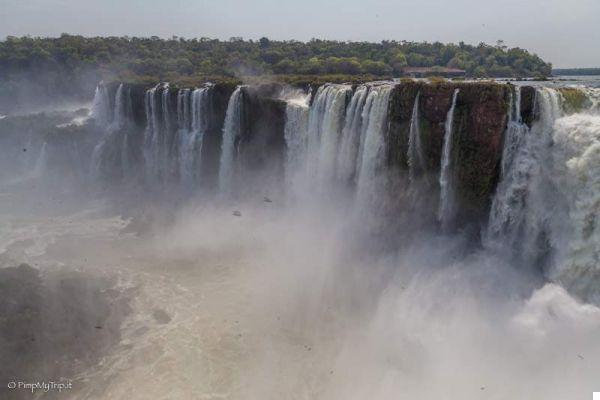
How to get there from the Argentine side
The "base" to visit the Iguazú Falls from the Argentine side is Puerto Iguazu Holiday Rentals, a small town that does not have much to offer itself, but where you can spend a couple of days pleasantly.
Furthermore, the hotel offer is wide and most of them are oases in the green of the forest.
Da Puerto Iguazú to the Argentine side of the cascate
There are various ways.
The first, the simplest, is take part in an organized tour which certainly allows you to travel comfortably and to have a guide ready to explain anything about the falls.
The second way is with public buses which depart every day from the city terminal and travel on Route 12. Buses leave approximately every 20 minutes and it takes 25 minutes to get to the falls (about 5 euros).
Gives Puerto Iguazú to the Brazilian Side
There are three ways to get to the Brazilian side from Puerto Iguazú: the first is to take part in an organized tour.
The second way is to take a private bus: Cruciero del Norte is one of the bus companies going to the falls.
The third way (the self-harming one, advice: don't do it!) Is to take a public bus from Puerto Iguazú to Foz do Iguazu and then from the bus terminal jump on bus 120 that takes you to the Park.
It takes a lot of time, aka it's definitely not worth it.
How to get there from the Brazilian side
From Foz do Iguacu to the Brazilian side:
There are buses every 22 minutes leaving from the bus terminal. It takes almost 40 minutes but the cost is very low: about one euro each way.
Da Foz do Iguacu to the Argentine side:
There are private buses traveling the route, the simplest alternative is to take a private tour.
To get to Iguazú you can also take taxis: better look for someone to share the shopping with and remember to negotiate on the price!
Visit and Circuits
To visit the Iguazu Falls from both sides it takes at least a couple of days. In my opinion the Argentine side is much more beautiful with various paths that allow you to experience the waterfalls and the forests from various different angles.
Just to visit the Argentine side it takes a full day.
The Brazilian side has only one route and half a day is enough to fully experience it. On this side, however, there are wonderful views of the falls on the other side.
THEentry from the Argentine side costs about 25 euros: beware that you can only pay in pesos, and the credit cards are not accepted!
If you enter a second day you have a 50% discount.
Opening Hours: the park is open from 8:00 to 18:00
THEentry from the Brazilian side it costs less, around 20 euros, but they accept credit cards.
Opening Hours: the park opens from 9:00 to 17:00
Argentine side
On the Argentine side there are three routes that can be followed: the upper circuit, That lower and Garganta del Diablo circuit.
In addition to the three circuits there are also two paths to go through.
Upper circuit: the Paseo Superior begins about 200 meters from the train station called Estación Cataratas and extends for about 1800 meters.
All along the route you can enjoy spectacular views of the circular chain that starts from the Dos Hermanas waterfalls, passing through Chico, Ramírez, Bosetti, Adán y Eva and the Bernabé Méndez waterfalls to end at the Mbiguá waterfall and Salto San Martin.
This circuit is undoubtedly the one that offers the most beautiful views of the Argentine side with a view over the limit of the falls, the island of San Martin and in the distance the walkway of the Devil's throat. The route back then crosses the river to get back to the train station.
Lower circuit: a circuit of 1700 meters inside the forest passing at the foot of the Dos Hermanas, Chico and Ramírez waterfalls to get to the end of this part of the Circuit, where you have a crazy overview of the great wall of water of the Bosetti waterfall.
Garganta del Diablo circuit: Garganta del Diablo (Devil's Throat in English) is often described as an ocean that disappears into an abyss and from my experience I can say that the impression you get is exactly this.
Il panoramic balcony above the majestic Devil's Throat allows you to approach a few meters from the most impressive waterfall of the whole Iguazú complex: a jump of 82 meters, a wall of water that disappears into a circular ravine in a crescendo of fog that rises in the air for 150 meters.
The noise is deafening, you have to shout to be heard by those close to you.
The walkway to get to the Devil's Throat starts about 1100 meters before the panoramic balcony. At the beginning of the walkway you arrive after having traveled a stretch of the forest on the ecological train (designed to have the least possible environmental impact) and having got off at the station of the same name.
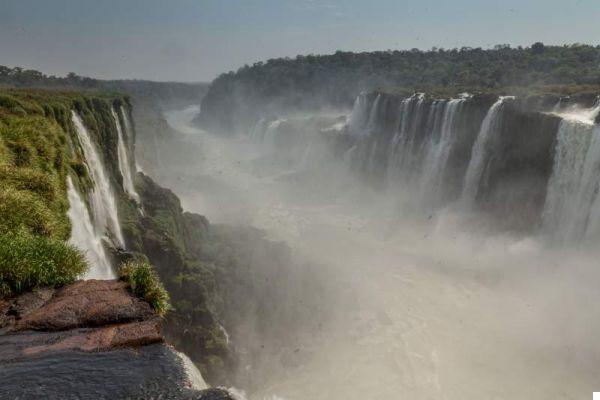
The whole path up to the waterfall is wonderful: the walkways develop a few meters above the water of the Iguazú river and the many islets, houses and shelters of many birds and animals.
I was there in the morning, just arrived, but the advice I can give you is try to go there in the afternoon when the light is better and when a myriad of colorful rainbows form in the mist of the falls.
Macuco path: the path takes its name from a bird that looks like a large brown chicken typical of the South America.
The Macuco Trail extends to the edge of the Iguazú canyon: thousands of years ago the waterfalls were located right here, then due to erosion they moved further back to the position in which they are now.
Along this route there are interpretation stations that help the visitor to know a little more about the biodiversity of this area:
Monkeys can easily be spotted. They live on trees, but they are very curious so it is absolutely normal to see them walking among people. The forest provides them with everything they need, especially their food: fruit.
You shouldn't feed them for a variety of reasons including their health. They are also very dangerous. They have teeth that are sabers and it is not uncommon for some tourists who have had the unfortunate idea of feeding them to have their hand quartered.
Although the forest is dense, it is not so difficult to see or "hear" the animals, especially around closing time when many of the visitors have left and tranquility reigns.
So sharpen your sight (and hearing!)
Green path: a short and easy path, in which to walk and enjoy nature.
Brazilian side
The tour on the Brazilian side lasts approximately 4 hours. A hop-on hop-off bus leaves from the Visitor Center which stops at the starting points of the various trails at the end of which there is usually a panoramic balcony.
The last stop is that of the path that leads to Devil's throat.
Although the best thing about the Park is the view over the waterfalls on the Argentine side, there are also three rather famous waterfalls here: Benjamin Constant, Deodoro and Floriano.
Great Nautical Adventure under the falls
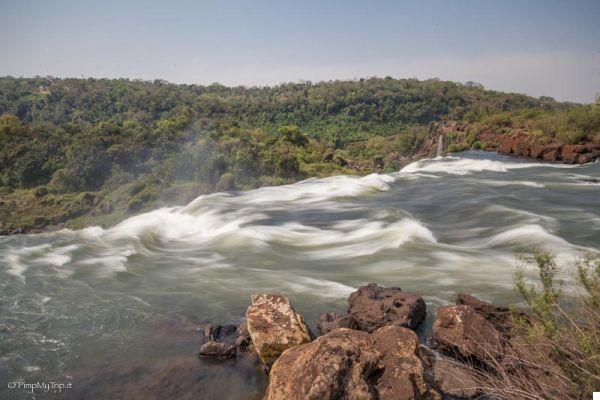
Also do not miss theNautical adventure in a dinghy under the falls: you will have fun like crazy, it's really worth it!
The great adventure is feasible on both the Argentine and Brazilian sides. I did it on the Argentine side. From the visitor center, we drove through the forest in an open truck to the boarding point.
Here we undressed (put on the swimsuit), put on a jacket and boarded a large inflatable boat.
The great adventure begins before the falls, the first piece goes up the river. You can see it getting more and more agitated, with bigger and bigger waves as you get closer to the falls.
You enter first in the Garganta del Diablo canyon where you are hit by splashes of water and then go back down to go around theisola San Martin and pass under the waterfall Leap San Martin.
The great nautical adventure allows not only to observe Iguazú from a different perspective but above all to “live intensely” the falls: I had fun like crazy, don't miss it, it's really worth it.
What to bring
Whether visiting in winter or summer, temperatures at Iguazu Falls are always quite warm. I opted for light clothing, with comfortable shoes and with a rubber sole to avoid slipping.
In addition to clothing, don't forget:
- Spray against insects such as Biokill (which you can spray directly on your clothes)
- Sunscreen
- Sun glasses
- Camera case: due to the misting of the water in the falls, the camera gets wet. Protect it with a case. I had a great time with these bags on purpose: they cost little and make a lot. Also bring a cloth to dry the lenses or le optical maps.
- Waterproof case for mobile phone
- Lots of memory cards for the camera and spare batteries.
If you also decide to do the Great Adventure on a rubber dinghy under the falls (absolutely, do it, it's great fun!) Bring a k-way, change of clothes and a towel.
Don't forget the GoPro!
Where to sleep
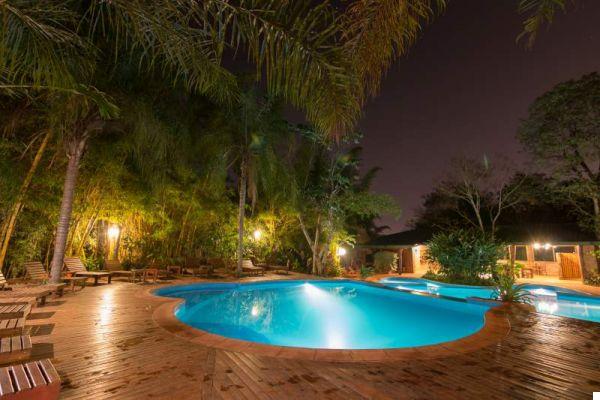
There is only one hotel inside the park, the Belmond, but it's very expensive and I honestly can't tell you if it's worth booking there, given the offer of amazing hotels in Puerto Iguazú.
In Puerto Iguazú the choice is varied, from hotels in the center, convenient for shops and restaurants, to hotels immersed in the forest, where you can find a corner of peace and tranquility.
One of the super recommended choices is The Village of La Selva: more than a hotel it is an eco-lodge immersed in the suggestive tropical forest, a paradise with a swimming pool surrounded by tall palm trees and an amazing restaurant.
The lodge offers several bungalows surrounded by tall plants and equipped with all comforts: the rooms, furnished with local wood furniture, have private bathrooms, wifi coverage and a balcony with a hammock overlooking the forest.
For families you can also book the “Luis Roga”, a perfect replica of a real Misionera house that can accommodate up to 6 people.

For the more demanding there are suites complete with a Jacuzzi on the balcony.
All the habitations of theAldea della Selva Lodge have been built in a sustainable way trying to minimize the environmental impact on the forest.
Book as early as you can because it is among the best lodges you can find and rooms are booked almost immediately.
For those who prefer to stay in the city, an excellent choice is thehotel Saint George, right in the center.
Spacious rooms, a beautiful swimming pool with a bar where you can relax after a swim (or after a day in the Park) where you can have a drink, chat and relax with friends.
Other Adventures near Iguazu Falls
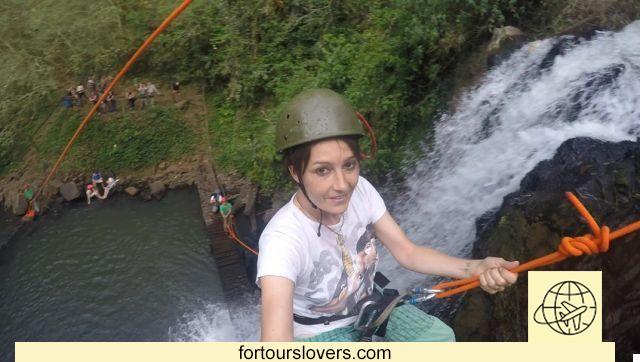
The Iguazu Falls can be visited, as I said in two days. My advice, however, is to stop a few more days to also experience the forest and the surroundings.
There are many adventures that can be experienced here. These are the absolutely recommended things to do:
1 - Helicopter ride over the falls
this tour is only feasible from the Brazilian side. It doesn't last long and costs a lot, but it's the only way to get a bird's eye view of the river and waterfalls surrounded by forest.
2 - Adventure in the forest
A half day full of adrenaline! In addition to visiting the forest, you can fly among its trees by zip-line (it's not like the canopy tour of Monteverde in Costa Rica, but it's still fun) and descend along a vertical wall under a beautiful waterfall.
Especially if you take part in activities like these do not forget to take out travel insurance in order to have assistance and shelter in the event of an accident.
3 - Bird Park
You can get there from the Brazilian side. The Falls Park and Iguazu Forest offer decent opportunities to spot local wildlife. I at the park saw some splendid toucans. It goes without saying that with so many people and the noise during the day, animals tend to stay hidden and not be seen.
Most of the Park's birds have been rescued either from wildlife smugglers or from situations of mistreatment.
Animals are not reintroduced into the wild because, now accustomed to humans, they would not be able to survive. Here at least they can spend the rest of their lives in peace and tidy, in large aviaries.
Il Das Aves Park instead it offers just that: various species of endemic birds from all over South America.
4 - Tour to the Guaranì village
A slightly touristy tour, but one that I can recommend to have direct contact with the indigenous people of Guaranì. We walk along a beautiful stretch of forest along a marked path along which traps have been set up that show how the Guaranì used to hunt.
5 - Visit the Missions of San Ignacio Minì
They are not located just around the corner, but 200 km from the falls. The best way to get there is to join a tour with a stop along the way to the gemstone mine (where they do great deals, by the way).
The ruins, among the best preserved, tell the story of missions of Jesus, founded in Argentina during the colonization of the Americas. They are very interesting, I absolutely recommend visiting them.
If you want to get an idea, before leaving, watch Roland Joffè's masterpiece film "Mission" with actors of the caliber of Robert de Niro, Jeremy Irons and Liam Neeson and with the wonderful soundtrack of the timeless Ennio Morricone (but don't do it if you are weak stomach).
My second trip to Argentina and the visit at waterfall of Iguazú it was done in collaboration with the Iguazú Park Authority, Aerolineas Argentinas and Lol.travel.
